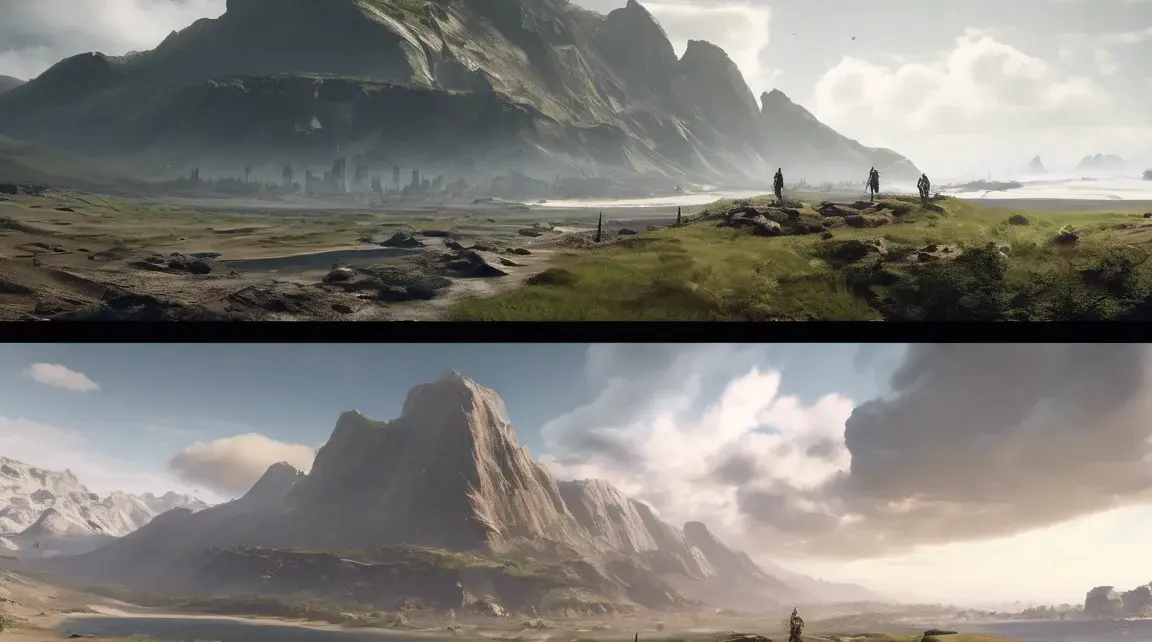When diving into the ever-evolving universe of video games, two major styles dominate the landscape—open world games and linear games. Each offers a unique experience tailored to different types of gamers. Whether you crave total freedom or a story-rich path, understanding the differences can help shape your next favorite gaming adventure.
What Is an Open World Game?
An open world game is like stepping into a vast digital playground. These titles offer players freedom to explore, take on missions at their own pace, and shape their own paths. You’re not tied to a strict storyline—you decide what to do, when, and how.
Imagine games like The Witcher 3: Wild Hunt or The Legend of Zelda: Breath of the Wild. These are shining examples where exploration is not just encouraged—it’s essential. Every forest, mountain, or hidden cave might house a side quest, treasure, or narrative twist waiting to be discovered.
Key Features of Open World Games:
- Non-linear progression
- Expansive maps with multiple exploration points
- Player-driven choices and outcomes
- Emergent gameplay and freedom of interaction
These games often feel like living, breathing worlds. Your choices impact story arcs, relationships, and even the state of the game world. That level of immersion and agency is what keeps players coming back for more.
What Is a Linear Game?
In contrast, linear games are like tightly-written novels. They guide you from one plot point to the next with purpose and precision. Every moment is curated by the developers to deliver maximum emotional and narrative impact.
Think of titles like Uncharted 4 or The Last of Us Part II. These games tell powerful, cinematic stories where every scene, challenge, and character interaction is designed to move the plot forward in meaningful ways.
Key Features of Linear Games:
- Scripted story progression
- Defined beginning, middle, and end
- Rich character development
- Strong emphasis on narrative and pacing
Linear games shine when it comes to storytelling. Because developers can control pacing, they can build suspense, deliver twists, and craft memorable moments that stay with players long after the credits roll.
Evolution of Game Design: From Linear to Open World
The evolution of video game design has been shaped by both technological advancements and changing player expectations. In gaming’s early days, limitations in hardware meant most games were linear by default. Classic titles like Super Mario Bros. or Metal Gear Solid followed set paths with defined objectives.
As technology progressed, open world games like GTA III and Skyrim redefined what was possible, giving players more control and a larger digital canvas to paint their own stories on. This shift wasn’t just technical—it marked a philosophical change in how games were made and experienced.
Open World Games: The Thrill of Exploration
Open world games thrive on player agency and discovery. You’re not just a character on a mission; you’re part of a world that reacts to your decisions. The freedom to wander creates a sense of adventure unlike any other.
Players often find satisfaction not just in completing the main quest, but in finding hidden stories, mastering side quests, or simply soaking in the scenery. This genre fosters creativity, immersion, and long-term engagement.
SEO Keywords:
- Best open world games
- Open world RPGs
- Exploration-based games
Linear Games: The Power of Narrative
Linear titles win over players with focused storytelling, cinematic gameplay, and emotional depth. Every level, cutscene, and dialogue exchange is placed with purpose. These games are perfect for players who want to be fully immersed in a gripping, cohesive narrative.
They’re also ideal for those who prefer shorter gameplay sessions with high-impact moments. With less wandering and more action, every second counts.
SEO Keywords:
- Best linear games
- Story-driven video games
- Cinematic gaming experiences
Player Preferences: Why the Divide Exists
The debate between open world vs. linear games often comes down to player psychology. Some gamers enjoy taking the scenic route and crafting their own journey, while others want a clear objective and tightly woven story.
What Influences Player Choice?
- Playstyle: Explorers vs. Goal-Oriented Players
- Time Commitment: Casual vs. Dedicated Gamers
- Immersion Type: Narrative-driven vs. Sandbox experience
Modern developers pay close attention to community feedback. With forums, social media, and streaming platforms, player voices are louder than ever. This feedback loop helps shape future games, blending the best aspects of both genres.
Open World vs. Linear: Pros and Cons
FeatureOpen World GamesLinear GamesExploration✅ Extensive❌ LimitedStorytellingVariable✅ StructuredReplay Value✅ High⚠️ MediumPlayer Freedom✅ Maximum❌ MinimalEmotional Impact⚠️ Can Vary✅ Strong
The Future: Hybrid Game Experiences
What if you didn’t have to choose?
Games like God of War (2018) and Horizon Forbidden West represent a hybrid model, blending open world freedom with strong narrative arcs. These titles point to a future where the lines between open world and linear experiences blur, giving players the best of both worlds.
SEO Keywords:
- Hybrid game design
- Story-rich open world games
- Future of gaming genres
Final Thoughts: Which Game Style is Right for You?
In the end, there’s no definitive answer to which game type is superior. Both open world and linear games offer valuable experiences that cater to different preferences, playstyles, and moods.
Are you the type who gets lost in exploration, uncovering hidden lore and secrets at your own pace? Or do you prefer an emotionally charged, cinematic experience that takes you on a defined but unforgettable ride?
The beauty of today’s gaming world is that there’s something for everyone. Whether you’re roaming the wilds of Hyrule or walking Ellie through a post-apocalyptic journey, both styles of games prove one thing—video games are a powerful form of storytelling and self-expression.




